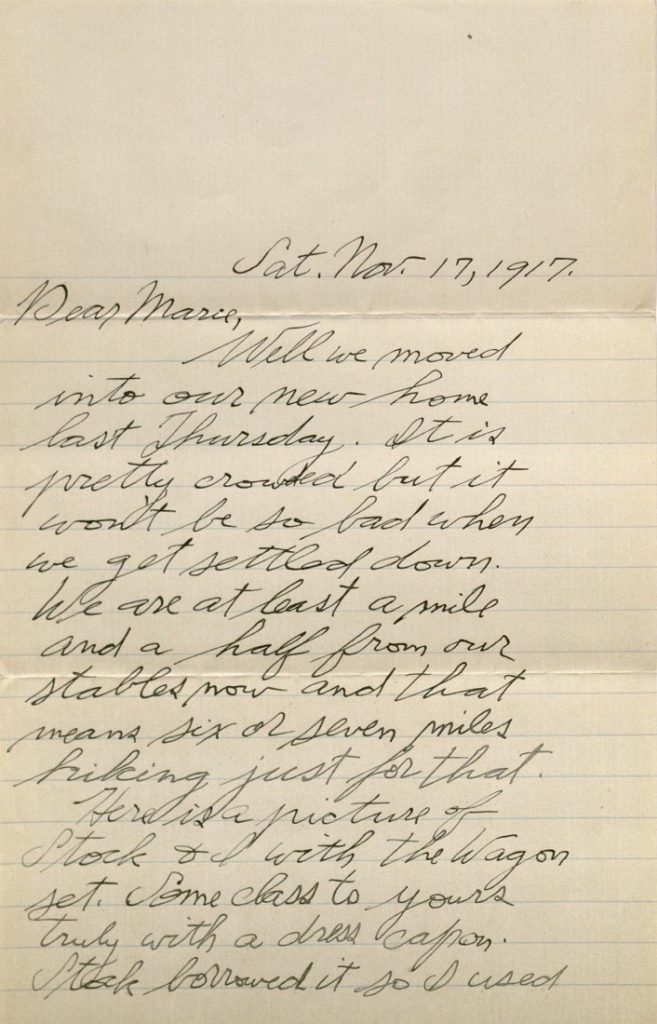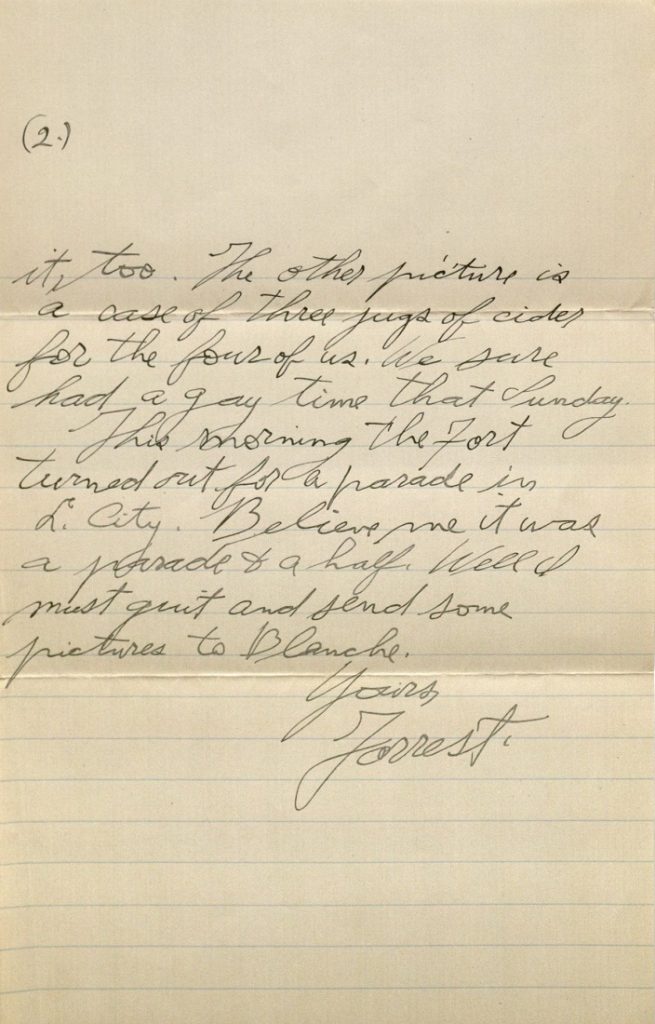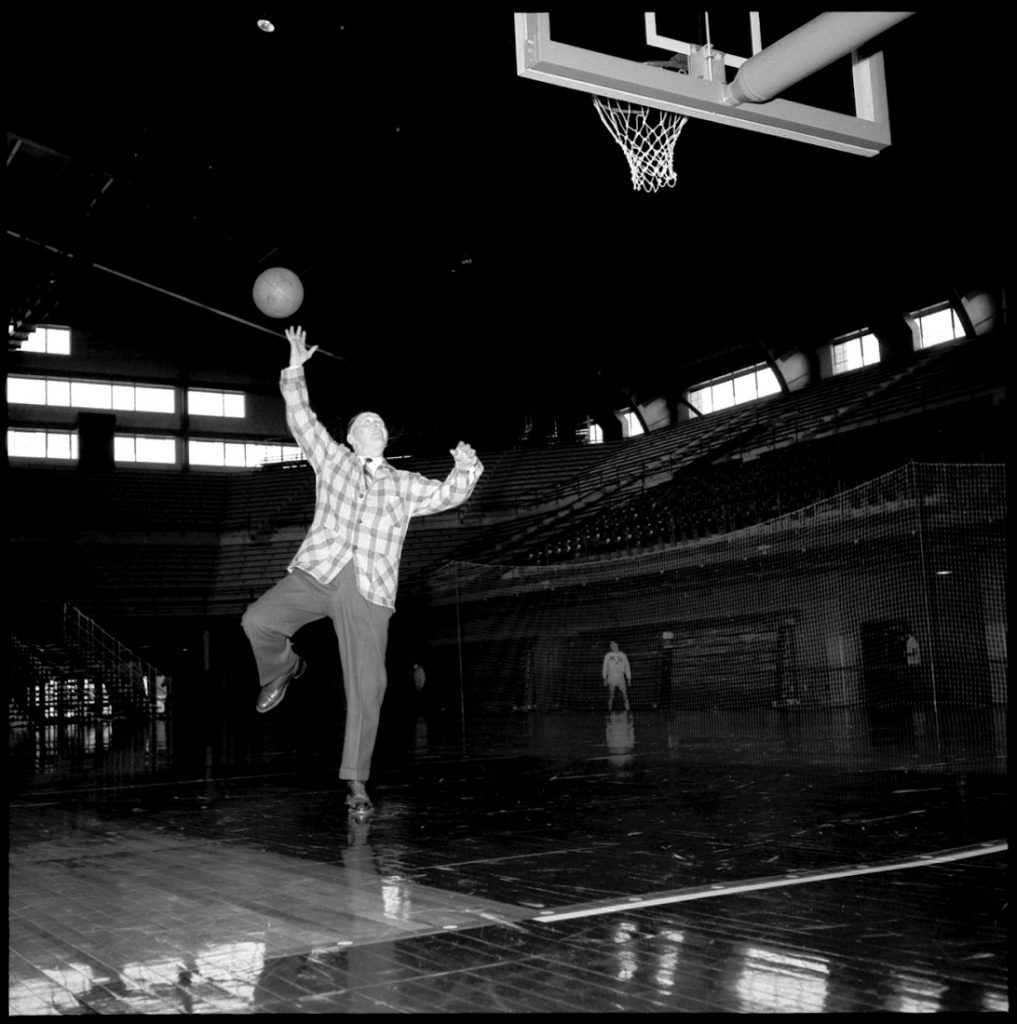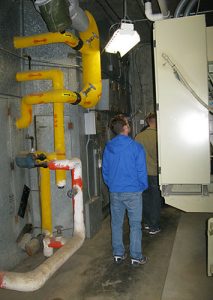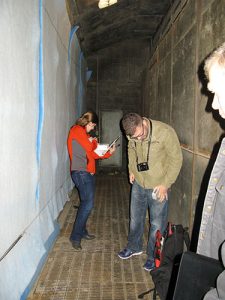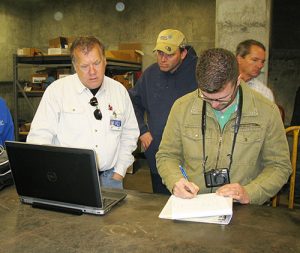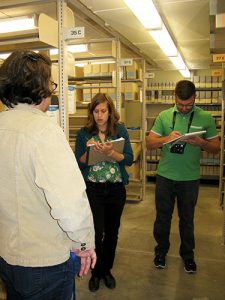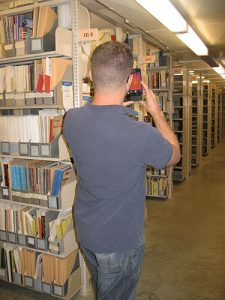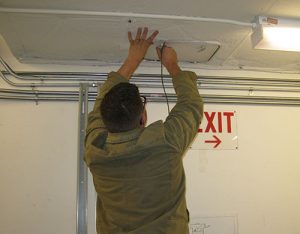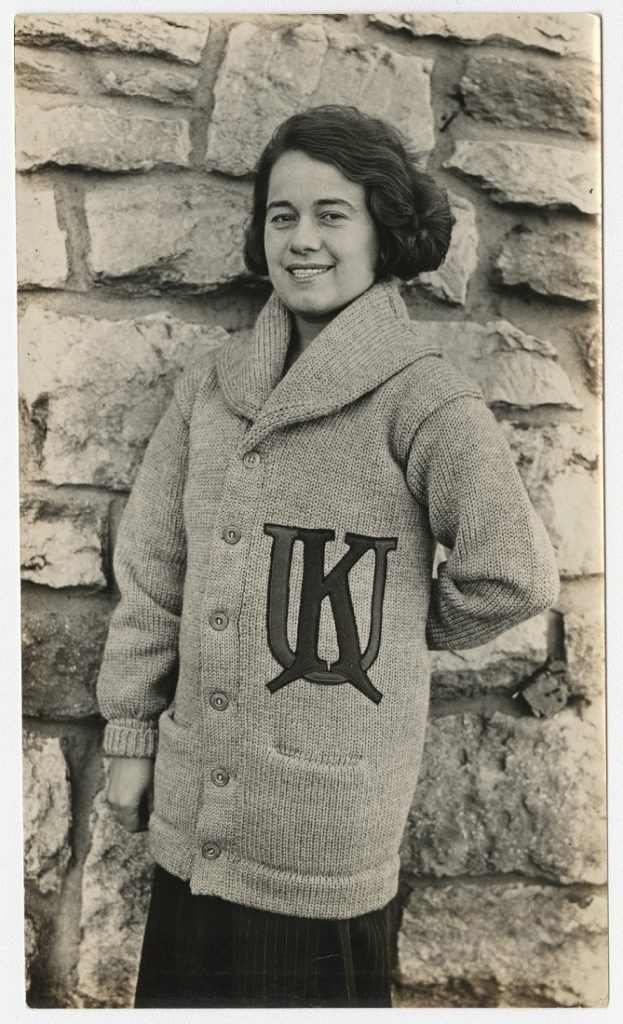World War I Letters of Forrest W. Bassett: November 13-19, 1917
November 17th, 2017In honor of the centennial of World War I, we’re going to follow the experiences of one American soldier: nineteen-year-old Forrest W. Bassett, whose letters are held in Spencer’s Kansas Collection. Each Monday we’ll post a new entry, which will feature selected letters from Forrest to thirteen-year-old Ava Marie Shaw from that following week, one hundred years after he wrote them.
Forrest W. Bassett was born in Beloit, Wisconsin, on December 21, 1897 to Daniel F. and Ida V. Bassett. On July 20, 1917 he was sworn into military service at Jefferson Barracks near St. Louis, Missouri. Soon after, he was transferred to Fort Leavenworth, Kansas, for training as a radio operator in Company A of the U. S. Signal Corps’ 6th Field Battalion.
Ava Marie Shaw was born in Chicago, Illinois, on October 12, 1903 to Robert and Esther Shaw. Both of Marie’s parents – and her three older siblings – were born in Wisconsin. By 1910 the family was living in Woodstock, Illinois, northwest of Chicago. By 1917 they were in Beloit.
Frequently mentioned in the letters are Forrest’s older half-sister Blanche Treadway (born 1883), who had married Arthur Poquette in 1904, and Marie’s older sister Ethel (born 1896).
In this week’s letter, Forrest mentions a parade in Leavenworth City, an event that was covered the next day (November 18th) by the Leavenworth Times. In reporting on the parade of 4,000 troops stationed at the fort, the newspaper noted that it “brought forcibly home the proximity of the war in which the United States is now engaged.” Even “residents of long-standing, to whom the military reservation has ceased practically to be a point of interest, were surprised at the number of men under the Fort Leavenworth command.”
Leavenworth Times article, November 18, 1917. Accessed via Newspapers.com.
Click images to enlarge.
Click images to enlarge.
Sat. Nov. 17, 1917.
Dear Marie,
Well we moved into our new home last Thursday. It is pretty crowded but it won’t be so bad when we get settled down. We are at least a mile and a half from our stables now and that means six or seven miles kicking just for that. Here is a picture of Stock and I with the Wagon set. Some class to yours truly with a dress cap on. Stock borrowed it so I used it, too. The other picture is a case of three jugs of cider for the four of us. We sure had a gay time that Sunday.
This morning the Fort turned out for a parade in L. City. Believe me it was a parade & a half. Well I must quit and send some pictures to Blanche.
Yours,
Forrest.
Meredith Huff
Public Services
Emma Piazza
Public Services Student Assistant



